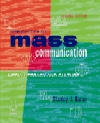 |
1 |  | 
Persistence of vision refers to |
|  | A) | a filmmaker's desire to have people see a film several times. |
|  | B) | people's ability to see motion in rapidly moving pictures. |
|  | C) | a montage device in which the same image is repeated over and over for dramatic purposes. |
|  | D) | a film camera's ability to record motion. |
 |
 |
2 |  | 
Demonstrating that large audiences would sit in a darkened theater to watch movies was an important contribution to the development of motion pictures. It was accomplished by |
|  | A) | the Lumiere brothers. |
|  | B) | William Dickson. |
|  | C) | Edwin S. Porter. |
|  | D) | George Melies. |
 |
 |
3 |  | 
The first producer to edit, intercut scenes, and use a mobile camera was_____________ in The Great Train Robbery. |
|  | A) | D.W. Griffith |
|  | B) | William Dickson |
|  | C) | Edwin S. Porter |
|  | D) | George Melies |
 |
 |
4 |  | 
Block booking refers to |
|  | A) | modern filmmaking characterized by reduced risk-taking and formulaic stories. |
|  | B) | a distributor forcing an exhibitor to take an inferior film in order to secure access to a better one. |
|  | C) | a studio producing several films on a single theme. |
|  | D) | an exhibitor owning several screens in one geographic area. |
 |
 |
5 |  | 
The three component systems of the movie business are |
|  | A) | production, direction, and financing. |
|  | B) | the studio, the director, and the actors. |
|  | C) | pre-production, post-production, and distribution. |
|  | D) | production, distribution, and exhibition. |
 |
 |
6 |  | 
Major studios |
|  | A) | produce the majority of films that appear on U.S. screens. |
|  | B) | frequently gamble on innovative films and often take those risks. |
|  | C) | finance their own films with their own money. |
|  | D) | all of the above |
 |
 |
7 |  | 
Independent studios |
|  | A) | obtain funding for their productions from a variety of financial sources. |
|  | B) | produce the majority of movies that make it to U.S. theater screens. |
|  | C) | often take bigger creative risks than can big studios. |
|  | D) | all of the above |
 |
 |
8 |  | 
Concept films |
|  | A) | tend to be far more creative and imaginative than independent films. |
|  | B) | can be described in one line and are thus easy to promote and market. |
|  | C) | are usually tied to content that has been on television. |
|  | D) | all of the above |
 |
 |
9 |  | 
Your McDonald's hamburger comes with a toy based on a character from a popular movie. This phenomenon is an example of |
|  | A) | a merchandise tie-in. |
|  | B) | a controlled purchase. |
|  | C) | a product placement. |
|  | D) | concept film-making. |
 |
 |
10 |  | 
Which of the following is not one of the rules associated with making a Dogme film? |
|  | A) | The director must not be credited on the film. |
|  | B) | The film must be in color. |
|  | C) | The film must be 90 minutes or longer. |
|  | D) | Cameras must be handheld. |
 |



 2002 McGraw-Hill Higher Education
2002 McGraw-Hill Higher Education